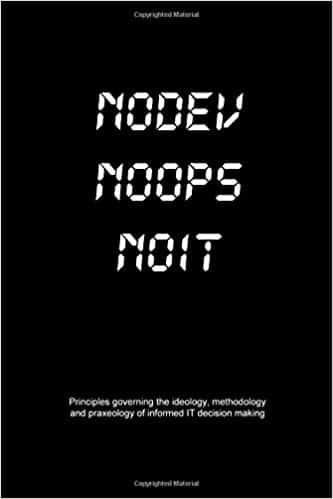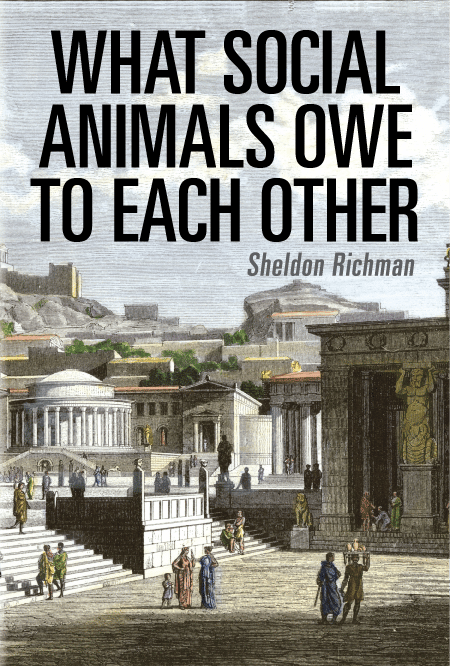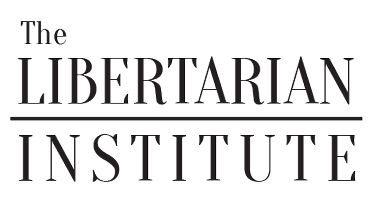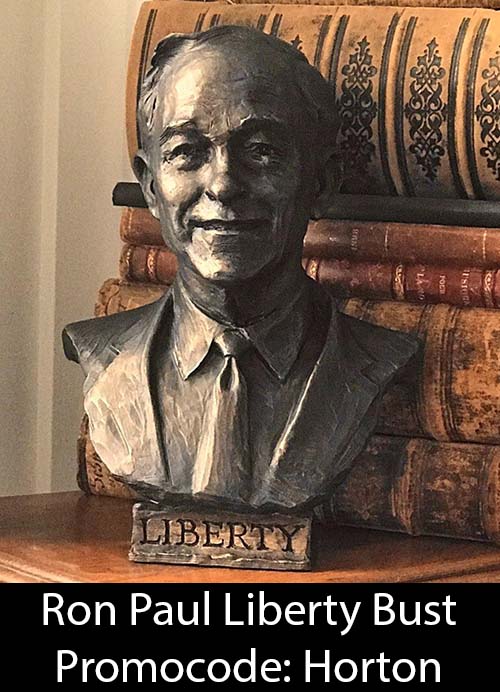by Yossef Bodansky.
Reprinted from Defense & Foreign Affairs, Strategic Policy, June–July 2000,
The Great Game that never ceases day or night –Rudyard Kipling, Kim, 1901
Turkestan, Afghanistan, Transcaucasia, Persia … are the pieces on a chessboard upon which is being played out a game for the domination of the world. –Lord Curzon, Viceroy of India (1899-1905), 1898
He who owns the oil will own the world, for he will rule the sea by means of the heavy oils, the air by means of the ultra-refined oils, and the land by means of gasoline and the illuminating oils. –Henri Berenger, French diplomat, 1921
During the last quarter of the 20th Century, in the aftermath of the oil crisis of the mid-1970s, the United States Government has relentlessly sought to ensure control over the key energy resources feeding the US and Western markets. Consequently, the United States has been, and still is, actively involved in a series of conflicts and undeclared wars all of which have had important long-term strategic ramifications.
Every US Administration since President Richard Nixon’s has pursued this policy because oil is the most important commodity used in the United States and the average US citizen is by far the world’s largest consumer of oil and gas. Meanwhile, the US has become increasingly dependent on imported oil to meet demand. This dynamic evolved just as the US’ vulnerability to the whims of foreign suppliers and the international markets became apparent.
The assertive policy of the various US administrations has never been challenged by the US political establishment because of the growing influence of the main US oil companies and their Saudi Arabian partners in the innermost US decision-making process. By the early 1970s, the US Intelligence assessment and policy formulation processes were strongly influenced, if not dominated, by the interests and positions of the key oil companies operating in Arabia.
Joseph Churba, between December 1972 and October 1976, was the Middle East Intelligence Estimator for Maj-Gen. George Keegan, then Chief of US Air Force Intelligence. He recounted a December 1972 National Intelligence Estimate meeting devoted to the Energy Crisis in which representatives from the oil companies, all in observer capacity, outnumbered the participating officials. Moreover, the CIA insisted an using data provided by the oil industry as the foundation for the national estimate and policy formulation.
Churba was shocked by his experience: “Here was blatant evidence of an incestuous relationship between the CIA and the oil companies. The oil firms were allowed to provide crucial data, and to oversee the members of the intelligence community in the performance of their estimating task. Invariably the estimates that emerged were in concord with the prevalent interests and views of the oil industry. That was my introduction to independent US government policy formulation.” (Joseph Churba, The Washington Compromise, 1995)
Indeed, the influence and power base of the oil companies would continue to increase as the United States and the West were mired in energy crises.
The oil crisis of the mid-1970s pushed Washington into a vigorous energy strategy. It became imperative for the US to ensure firm though invisible control over the key oil resources of the Persian Gulf. The concurrent tensions of the Cold War further exacerbated the US strategic posture. The aggregate impact of the shock of the Arab oil embargo and the growing Soviet military power and strategic assertiveness in the aftermath of the US withdrawal from Indo-China engendered in Washington fears of a Soviet military slide into the Persian Gulf area which would deprive the US of access to the region’s oil and gas resources.
The security of Persian Gulf oil became such a crucial issue for Washington that US Secretary of State Henry Kissinger warned Soviet Foreign Minister Andrei Gromyko that Soviet blocking of the Strait of Hormuz was one of the three nuclear casus belli of the United States (the others being a Soviet attack on Japan and invasion in Western Europe). Essentially Kissinger stressed that the US was willing to use nuclear weapons in order to prevent the fall of the Persian Gulf into Soviet hands. Subsequently, the Carter Administration formed a dedicated force – the Rapid Deployment Force – specifically in order to block a Soviet advance toward the Persian Gulf, primarily via Iran.
Although the United States never had to resort to such drastic measures to defend its access to the Persian Gulf energy resources, it has since the mid-1970s continuously engaged in a series of undeclared wars, as well as the declared Gulf War of 1990-91, in order to ensure the West’s access to, and hegemony over, the key energy resources of the Persian Gulf, and, more recently, Central Asia and the Caspian Sea Basin (commonly known as “The Persian Gulf of the 21st Century”).
This type of US intervention not only continues, but is actually escalating, primarily in the Caucasus. And although Washington’s primary objective has been energy resources, Moscow has been the principal adversary in these endeavors.
The profound difference between the approaches of Washington and Moscow to their encounters over access to energy resources has repeatedly exacerbated the superpowers’ face-offs. Throughout this period, Moscow has been immersed in the latest phase of Russia’s historical cyclical confrontations with Islamdom. For Moscow, the concurrent energy-related crises were but minor aspects of a far more profound dynamic of historic significance. For Washington, on the other hand, the Soviet actions were no more than a series of discreet localized undertakings in the context of the bilateral Cold War. All that time, Washington had been focused on securing US control over the energy resources. This dichotomy between Washington’s and Moscow’s comprehension of the same crises brought the world to the verge of nuclear confrontation at the height of the Cold War.
Ultimately, these crises transformed the global correlation of forces on an historic scale. The main catalyst for these cataclysmic dynamics has been Washington’s penchant to use radical Islamist and Arab forces as US proxies rather than to directly confront Moscow. Consequently, the United States has unleashed the genie of radical militant Islam as a viable political force capable of delivering results for the sponsoring states, be they the US’ erstwhile allies or opponents. Thus, for the Hub of Islam, the last quarter of a century has been dominated by the surge of radical, militant Islam as the most vibrant mega-trend, confronting modernity and challenging the state system.
In retrospect, this US quest for oil has been decisive in shaping the climax of the Cold War and the first post-Cold War decade. During the last quarter of a century, the United States and the Soviet Union, or Russia, were involved in three major confrontations. Since the late 1970s and during the 1980s, the US played a major role in fermenting and sustaining the predominantly Islamist resistance to the Soviet occupation of Afghanistan.
The primary US objective was to prevent the USSR from reaching the oil resources of the Persian Gulf. As well, during the 1980s the US actively assisted Iraq in the Tanker War theater of the Iran-Iraq War to the point of actively fighting the Iranian Armed Forces. This prompted Tehran to undertake such special and terrorist operations as the 1988 kidnapping, torture and murder of US Lt.-Col. William Higgins by the HizbAllah in Lebanon and the 1988 mid-air bombing of PanAm Flight 103 over Lockerbie, Scotland. All of these activities were the result of the US determination to prevent the consolidation of Soviet control over Iran virtually by any means short of a major war.
In the 1990s, Russia and the US were once again facing each other over energy resources, this time in the quest for the access to the resources of the Caucasus, the Caspian Sea Basin and Central Asia. And once again, the US was – and is, as the 21st Century dawns – encouraging its allies to support the irregular Islamist forces fighting the Russians, while providing strategic and diplomatic umbrella, and reviving radical militancy in the process.
In all three cases, the US sought to intervene and manipulate the geo-strategic struggle between Russia (Soviet Union) and militant Islamism in order to ensure the West’s control over regional oil and gas resources. The US intervention has always been on the side of Islam, and the US’s primary instruments of confronting Russia have been radical Muslim forces – either Islamist mujahedin (in the cases of Afghanistan and Chechnya) or radical-revolutionary Ba’athism (in the case of the Iran-Iraq War) – even though these US-supported militants have always been virulently anti-US. Little wonder that in Afghanistan and the Persian Gulf the US ultimately lost in geo-strategic and economic terms: anti-US Islamist radicalism dominates much of South Asia while Afghanistan is ruled by the anti-US Taliban. As well, in 1990-91, soon after the conclusion of the Iran-Iraq War, Iraqi Pres. Saddam Hussein changed his policies to such an extent that the US had to lead an international coalition in the Gulf War against its erstwhile ally. Saddam Hussein is still in power in Baghdad, threatening the stability of the volatile Persian Gulf region. Moreover, the US is far from faring well in the still-unfolding struggle for the Caucasus while the anti-Russian forces which Washington is supporting are radical Islamist and allied with Osama bin Laden and other similarly anti-US forces.
Ultimately, although “The Great Game For Oil” has been waged in a relatively limited and well-defined geographical zone, it has been a major historical turning point. To a great extent, the “saga” of the US quest for hegemony over these energy sources encapsulates one of the most consequential socio-political transformations in the modern era. This is driving the United States and much of the world into a potential confrontation which is both avoidable and undesirable. At the core of the current crisis is Washington’s penchant for a narrow and limited focus in global affairs. This phenomenon is further compounded by the growing subjugation of US foreign policy and global strategy to the interests of domestic policy and politics.
The developing world – that oft-neglected region covering the majority of the face of the earth – has been the arena in which this crisis has evolved in the aftermath of decades of gestation. During the 1970s, the developing world withstood a series of shocks as a result of its relationship with both superpowers: the USSR and the USA. On the one hand was the US defeat in Vietnam and the ensuing retreat from South-East Asia [SEA]. On the other hand was the surge of the USSR and its allies (mainly Cuba and Vietnam) to not only fill the vacuum created by the US withdrawal from SEA, but also seize new territories in the Middle East, the Horn of Africa, southern Africa and Central America. Even the US “acquisition” of Egypt was more a result of a Soviet disengagement due to shifting priorities than US strategic assertiveness. The Soviet invasion of Afghanistan in the last days of December 1979 was a fitting cap to a most turbulent decade.
Consequently, starting in the late 1970s, the developing world, and most notably the Muslim World, began reacting to these events. Essentially, both at the grassroots and the leadership and intellectual levels, the developing world was giving up on the legitimacy and acceptability of the “Western” way of life: be it Western democracy, military government or Soviet-style socialism. In principle, the developing world strove to return to its “roots” and other traditional frameworks of socio-political self-identity.
At first, the objective was to redefine society and government within the permissible confines of the modern world. The most climactic early manifestation of this trend was the 1979 Islamic Revolution in Iran.
Despite its preoccupation with the Cold War – particularly the need to modernize and expand the Armed Forces to meet the challenges of the strategic-nuclear face-off with the United States and a future war against NATO in Europe – the Soviet Union quickly recognized the significance of these developments and particularly the rise of radical Islam.
Given the Kremlin’s stagnation in the waning days of the Brezhnev Administration, the mere existence of awareness at the top was indicative of the premonitions and preoccupation among the professionals at working levels below.
At the same time, the Soviet leadership remained ambivalent and undecided as to the meaning of this phenomena. Nevertheless, the revival of Islam seemed sufficiently important to the Politburo for L. I. Brezhnev to address the topic explicitly in his Report to the 26th Congress CPSU, on February 23, 1981.
After his statement of the principles of the Soviet Policy toward Afghanistan and Iran, Brezhnev continued: “Of late, Islamic slogans are being actively promoted in some countries of the East. The main thing is what aims are pursued by the forces proclaiming various slogans. The banner of Islam may lead into struggle for liberation. This is borne out by history, including recent history. But it also shows that reaction, too, manipulates with Islamic slogans to incite counter-revolutionary mutinies. Consequently, the whole thing hinges on the actual content of any movement.”
The subsequent escalation of the wars in Afghanistan, the Iran-Iraq border, as well as Lebanon were to clearly demonstrate the veracity of Moscow’s observation.
Starting in the mid-1980s, Soviet and developing world communist leaders were clearly aware of the growing strategic significance of the rejuvenation of sub-national and religious sentiments as political instruments throughout the developing world. In the Muslim world, Soviet experts concluded, the community’s religious self-awareness superceded and often replaced the national self-awareness. Linguistic and ethnic affinity crossed established national borders and was stronger than “patriotism.” Muslims develop, perceive and define their identity in accordance with similar expressions of everyday life, namely religious, linguistic and cultural behavior. Even the most ideologically conservative officials, such as the CPSU (Communist Party of the Soviet Union) International Department’s Boris N. Ponomarev now acknowledged to internal forums that the spreading anti-communist guerrilla struggles throughout the developing world, irrespective of the extent of covert assistance provided by the US-led West, were ultimately the manifestation of the peoples’ desire to return to traditionalist social frameworks rather than components of a vast anti-communist conspiracy.
Even the most ideologically committed revolutionary organizations, such as the African National Congress (ANC) and the South African Communist Party (SACP), did not have answers to the rising indigenous problems of the developing world. In a 1989 Pamphlet of the SACP called The South African Working Class and the National Democratic Revolution, leader Joe Slovo struggled with the growing gap between the black masses and the revolutionary and terrorist organizations. He justified this situation arguing that the SACP, being “a worker’s vanguard does not, and should not, have the character of a mass movement. It cannot hope to survive in illegal conditions without clandestine methods which often, unavoidably, conflict with democratic practices.”
There were strong sentiments of nationhood and tribal identity throughout the black community and the masses were drawn to such movements. Therefore the ANC and SACP had to face the nationality question. Joe Slovo admitted that “the Marxist theory of the National Question is perhaps the least developed in our revolutionary science.”
Official Moscow’s reaction to these developments was complex and prudent. Initially, the USSR tried to seize control over these dynamics through intelligence and military assistance loaded with ideological connotations which would subordinate the fledgling movements to the Soviet Union’s strategic interests. Ultimately, having thoroughly studied the new wave of revolutionary spirit, Moscow was satisfied with redirecting the inherent and indigenous ire/wrath of the developing world against the West. This profound change in confronting even the most anti-Soviet militant movements would have a devastating impact. It was in this context that even movements wholeheartedly supported by the US – most notably the Afghan mujahedin – evolved into virulently anti-US forces.
Meanwhile, the US under the Reagan Administration was appropriately preoccupied with meeting the growing Soviet threat. During the 1980s, Washington was paying close attention to the Soviet military build-up and growing capabilities worldwide to the point of examining all world events through the prism of US-Soviet bipolarity. Consequently, all the unfolding in the developing world, if noticed by Washington at all, were reacted-to on the basis of their real, potential or imaginary contribution to the Soviet strategic posture. Hence the evolution of the Reagan Doctrine to “roll back” the USSR (as well as Cuba and Vietnam) from strategic locals in the Third World.
In this context, the US and Western allies assisted a host of savory, not-so-savory and completely unsavory characters such as the Afghan mujahedin, Saddam Hussein, Angola’s Jonas Savimbi and his UNITA movement, as well as the Nicaraguan Contras. The complex character of, and inherent problems with, these “freedom fighters” were known but essentially ignored in Washington because they were “rolling back” the “Evil Empire.” In the Reagan Administration’s Washington, nobody really bothered about the long-term ramifications of the US-assisted empowerment of these “freedom fighters” over their countries. Nor were the emerging trends of the developing world reawakening noticed, let alone taken into consideration.
There were many good reasons for Washington’s single-mindedness. During the 1980s, as the Cold War was escalating, the Soviet strategic military threat to the vital interests of the United States and West was at all times high. NATO’s simulated war-games confirmed that the USSR would have won a non-nuclear war with NATO and reached the English Channel within an amazingly short period. Moreover, the USSR was in possession of an impressive array of internal-security forces capable of stifling any internal opposition and challenge to the Communist Party. And then, almost suddenly, the USSR collapsed. This momentous event happened not because of impetus from the West – even though the costs of meeting the Reagan’s Cold War severely hurt the Soviet economy – but primarily because having unleashed Russia’s inner-spirit during Mikhail Gorbachev’s Perestroika period, the Soviet Nomenklatura lost the will to struggle and survive.
And so the early 1990s saw the end of the Cold War and the ensuing US assertion as “World Leader” through intervention in the intra-Arab crisis in the Persian Gulf which became the US-dominated Gulf War and the intervention in the collapse of Yugoslavia which led to US direct military intervention and to the still unfolding fratricidal wars and seething hatred throughout the Balkans. Although Washington would insist throughout the 1990s that US leadership was best manifested through a dominant role in the “globalization” of world economy, in reality, the US posture as a self-nominated “world leader” was maintained through arbitrary and largely unjustified as well as ineffective use of force against true and imaginary enemies. The aggregate impact of the Clinton Administration’s unilateral interventionist policies and arbitrary use of force is yet to be fully comprehended.
>From an historical point of view and with the wisdom of hindsight, the 1990s was a decade literally purloined by the Clinton Administration. Since the US started the decade as the undisputed leader of the post-Cold War World, the whole world was victim of this development. Essentially, what could have been an era of consolidating a new world order based on economic growth and expansion of personal freedoms, turned out to the era in which the foundations for the next cycle of global upheaval were laid down. Significantly, this happened if not by the Clinton Administration’s design than by sheer neglect.
At the core of this phenomenon is the Clinton Administration’s consideration of foreign policy as an instrument to further its domestic political agenda. This dynamic was further aggravated by the Clinton White House’s inherent loathing of the military and its profound misunderstanding of the principles of the use of force as a political instrument.
President Clinton’s so-called foreign policy has taken the quest for instant political gratification to extremes. For the Clinton White House, two subjects dominate US “foreign policy” – cheap oil and cheap consumer goods – in order to increase popularity among average Americans, irrespective of corruption scandals and other mayhem.
The quest for cheap consumer goods (from TVs and watches to shirts and toys) in the department stores makes it imperative for Washington to avoid any crisis with Beijing at all cost. Although the cessation of imports from the PRC would immediately affect the US consumer but concurrently devastate the PRC’s economy, the Clinton Administration has been more fearful of the ramifications of a moderate price rise in the department store than Beijing has been about a possible collapse of the PRC economy. Hence, to the White House, Beijing can do no wrong. However, since the Clinton White House is advocating human rights, democratization, nuclear non-proliferation and other policies which the PRC shows no inclination of pursuing, it is imperative for Washington to “justify” Beijing’s policies and actions. In the case of the PRC military build-up, this will be done by bringing up the Indian and Japanese threat. This is a very important issue given the need to satisfy the strong Democratic Party-dominated arms control and non-proliferation interest groups. The Clinton Administration will also use this approach as a key to avoiding confrontation with Congress over other aspects of US relations with the PRC and Japan. It is so important to deal with the proliferation factor that the US must ignore all other aspects such as the rapidly-growing and seemingly uncontrollable trade deficit with the PRC, and the Far Fast as a whole. This “logic” makes it vital for the PRC to continue and expand its nuclear proliferation policies in order to divert Washington’s attention away from any other aspect of the evolving posture in East Asia.
The quest for cheap oil means the dominance of “Muslim interests” over US policy vis-a-vis any “cause” involving Muslims such as the Middle East, the Balkans and the Caucasus. Hence, the Clinton Administration did its utmost to ensure that Bosnia-Herzegovina would became a Muslim state, and bombed the civilian-economic infrastructure of Yugoslavia to empower the Kosovo Albanians. The US Administration has repeatedly sought a rapprochement with Iran in order to reduce the anxieties of Riyadh.
Islamist revivalism has been tolerated throughout the Hub of Islam, endangering moderate (Muslim and secular) governments traditionally friendly to the US, straining relations with such close allies as France. The Clinton Administration risked the alienation of Russia to a Cold War level in order to empower the Chechens, and eroded the consolidation of a genuinely independent post-Soviet Central Asia and the Caucasus.
Significantly, even the power in Washington of the Jewish establishment did not suffice to prevent the growing US pressure on Israel to abandon the quintessential positions of its elected government in pursuit of a Middle East “Peace Process” serving the interests of the Clinton White House.
Meanwhile, unburdened by superpower presence and attention, the myriad of militant radical movements which sprung up in the 1980s burst into action in the 1990s. The result of this dynamic has been the eruption of radicalism, hatred, wrath and terrorism, all being aggravated by the growing economic pressures in the developing world.
Thus, the renewed escalatory spiral of international terrorism – both at the heart of the West as well as throughout the Hub of Islam and adjacent areas – is a major feature of world affairs that will prevail into the foreseeable future. Furthermore, the surge of international terrorism will see both the spread of populist Islamist terrorism throughout the Hub of Islam and the launching of spectacular strikes of unprecedented ferocity and lethality at North America, Western Europe, Latin America and Australia.
The most important aspect of the escalation of international terrorism is the element of state sponsorship. The most important terrorist strikes will be the manifestation of the national strategies and interests of sponsoring states rather than the expression of the grievances of the perpetrating organizations. This is not a sudden change, but a gradual trend now reaching maturity.
Meanwhile, much of the plight of the developing world stems from economic frustration and corruption as well as the populations’ loss of trust in the nation-state system. There is widespread disenchantment as a result of the collapse of the post-colonial era’s idealism, the failure of states to gain grassroots legitimacy, the enduring rampant corruption (mainly by the Westernized elite), as well as the endemic economic and social crises. This combination of despair and anger creates a breeding ground for desperate youth to become terrorists.
There is a broad quest to find new non-state identities as panaceas for the current plight. Most prevalent are the sub-national identities (ethnic, tribal, clannish) and/or the universal utopianism identities expressed through religious extremism (mainly radical militant Islam as expressed in revivalist pan-Islamism, pan-Arabism, pan-Turkism, etc.). Still, despite this growing tendency for large numbers of people to identify with new non-state movements, the world continues to function on the basis of nation-states as the unit of grouping peoples, handling financial and travel issues, major economic activities, etc. The despairing interpret this reality – not without reason – as the imposition of a world order and a value system by the West.
Their reaction is to resist this Western value system. And since the developing world is incapable of taking on the West directly, international terrorism becomes the most expedient weapon in the arsenal of the aggrieved in the developing world. Already by the mid-1980s, Sheikh Muhammad Hussayn Fadlallah, the spiritual leader of the HizbAllah, warned of the impending struggle between the oppressed of the developing world and the West.
“This violence began as the people, feeling themselves bound by impotence, stirred to shatter some of that enveloping powerlessness for the sake of liberty,” Fadlallah said. He therefore expects that the next World War “will be a war of terrorism, not Islamic terrorism, but terrorism among all the peoples of the planet. The weak will fight to defend their interests, even if they have to use knives and stones to spread chaos throughout the earth.”
Fadlallah emphasized the legitimacy of terrorism as an instrument of choice given the disparity between the oppressed and their oppressors. “Terrorism is a relative matter. People who want to be free and want to confront the forces which stand in the way of liberation causes must look for all possible means to use for the liberation of their territory, economy, and policies. They do not consider anything forbidden in the pursuit of these objectives. The legitimacy of every means stems from the legitimacy of the end sought.”
The economic gap between the developing world and the West will grow, and the hostility and radicalization of the deprived will also grow. This problem will worsen because of the expansion of electronic media, particularly satellite TV, throughout the developing world. TV now brings images of the affluence in the US – albeit grossly exaggerated as depicted in the immensely popular soaps and thrillers – to virtually every community in the developing world. The continued presence of these images sharpens the awareness of the widening gap between Western affluence and the developing world, and the realization that this gap is not bridgeable in the foreseeable future. This realization brings frustration, despair, and desire for revenge: the driving energy behind the anti-West armed struggle and terrorism.
However, on their own, oppression and destitution do not provide the skills and resources required to hijack an aircraft or destroy it in mid-air. This leads to the second factor: the terrorism-sponsoring states.
In principle, running a successful spectacular terrorist strike at the heart of the West, or even in a developing state with organized security forces, is a lengthy, expensive and complex undertaking. Obtaining the expertise and instruments for a terrorist strike are neither easy nor self-evident, particularly to somebody coming out of an obscure part of the developing world.
Enter the terrorism-sponsoring states. These states constitute the source of ideology, training, funding, expertise, command and control. The intelligence services of the sponsoring states provide secure transportation and communications, access to increasingly sophisticated – thus expensive – electronic gadgets, explosives and weapons. Thus, without the terrorism-sponsoring states there would not have been international terrorism, definitely not at the intensity and lethality the world now knows, and particularly the super-lethal terrorism the world fears will come.
As the challenge of carrying out terrorist strikes increases, so does the dependence of terrorists on the professional, expert and support services provided by sponsoring state organs. Most terrorist organizations have already reached the point of near-total dependence on the sponsoring states for their existence and ability to operate. The states which provide support have already become the dominant and controlling element in the international terrorism system.
Terrorism-sponsoring states have interests ranging from ideological and theological aspirations to pragmatic and practical strategic and economic goals. They commit to terrorism sponsorship to further these interests. States use terrorism in order to attain objectives they cannot and/or would not attain through regular and conventional instruments of international relations, from negotiations to economic disputes to waging major wars. And as the potential costs and price of war grows, so does the penchant to use terrorists in war-by-proxies in order to solve national problems and/or realize national aspirations through the use of force but without much of the risk entailed.
Another trend misunderstood and neglected by the Clinton Administration in the 1990s was the rebound of Russia from the collapse of the Soviet Union. It is necessary to look at what is happening in Russia, particularly in view of the recent elections, both the Duma elections of December 1999 and the Presidential elections of March 2000. The end of the Boris Yeltsin era and the beginning of the Vladimir Putin era is the completion of the transitionary period from the Soviet days to a resurgent Russia. The economic problems will make the resurgence of Russia take longer than it could have, but what is of importance is the context of this transformation.
Russians define this trend in the context of their Soviet-era experience. “Russia missed the 20th Century,” they explain. “Therefore, Russia is going back to 19th Century to find guidelines for the 21st Century.” Indeed, Russia is returning to old traditions, but with a modern, up-to-date twist.
A history-conscientious great power, Russia is still coming to grips with having missed the 20th Century. Searching for its own self-identity and destiny, Russia is torn between the conflicting visions of the Russophiles and the Eurasianists. The resolution of this self-devouring conflict is far more crucial than the prospects of Russia’s economic recovery. The Eurasianists argue that Russia should rejoin the Orient – the China-led Trans-Asian Axis – contribute to, and benefit from, their onslaught on the West. In contrast, the Russophiles are committed to reviving Russia’s traditional role as the eastern flank of the civilized world (now the industrialized North) blocking the advance of a radical and violent Orient – Mongols, Tatars, or the Trans-Asian Axis – in defense of a Western civilization that has neither recognized nor appreciated Russia’s sacrifices.
Both sides readily point to gathering storms and building threats all around Russia.
1. From the West: The US-inspired economic reforms destroyed whatever was left of the dilapidated Russian economy and reform process. NATO’s expansion eastward (despite US President George Bush’s commitment to Soviet Pres. Gorbachev that NATO would not advance beyond a unified Germany) and subsequent meddling in the Baltics and Caucasus raise a credible doubt as to the end of confrontationalism in Europe. Moreover, the US interventionist policy in the Balkans, particularly the demonization of the Serbs, touched a raw nerve over the viability of the US “clash of civilizations” doctrine in which the Eastern Churches are on the “wrong side” of the divide. The US efforts to prevent German improvement of relations as well as strategic, security and defense cooperation with Russia suggest to Moscow that the US remains hostile and that the West is still a source of strategic threat.
2. From the East and South: China’s strategic, economic and military rise, particularly its ensuing cooperation with the Islamists along the Trans-Asian Axis, is a source of mounting concern, especially in the longer term. The People’s Republic of China’s hostility toward India – a close and traditional ally of Russia – alarms Moscow. The Chinese embracing of Islamist militancy in the Middle East is also a source of great apprehension. The PRC penetration of the former Soviet and now CIS Central Asia constitutes an encroachment on Russia’s sphere of vital interests and therefore a source of long-term threat. The Islamist radicalization of the Heart of Asia – from Afghanistan and Pakistan through Central Asia to the Caucasus – is alarming to Moscow.
Given the current economic woes of Russia, as well as the tribulations of its political system, Moscow cannot address both perceptions of threats simultaneously and still recover Russia. Hence, the great challenge, as elucidated by the two ideological-political camps – the Russophiles and the Eurasianists – is setting Russia’s priorities right.
This is not an abstract notion. The unique importance of these ideological-political camps lies in the inherent character of the Russian power structure: the triangle of power and the perpetual two-versus-one dynamic. The principle of the Russian triangle of power is simple: Moscow is run by three distinct cores of power and influence. The institutional stability, the “checks-and-balances” (to use US terms), is created by the competitive dynamics to build two-versus-one alliances. In Soviet times, the three bodies were the Communist Party, the Military-Industrial Complex, and the security organs. In Yeltsin’s times, the three bodies were the Russophiles (mainly the defense establishment), the Eurasianists (mainly in the foreign ministry and foreign economy establishment), and “the Yeltsin family” (which includes the oligarchs). Yeltsin’s tendency was to go with the Eurasianists because of the immense profits made by “the family” from legal and illegal export transactions, money laundering, etc.
Hence, it is safe to assume that Moscow’s policy in the Putin era, and most likely beyond, will be determined by the redefinition of the triangle of power. Two of the three bodies – the Russophiles (mainly the defense establishment) and the Eurasianists (mainly in the foreign ministry and foreign economy establishment) – remain entrenched, albeit more distinct and more powerful because of the overall dynamics in Russia’s national security and economic posture. The key question is what will be Putin’s own power base: the third power body.
This is why the recent elections in Russia are so important. President Putin has resolved to use the Duma as an institution as the core of his own power base. The Duma, however, is most diverse as far as the political and ideological composition of its membership. At the same time, virtually anybody who is “somebody” in Russian politics and economy is now a member of the Duma. Consequently, this composition finally gives the Duma – as an institution – a meaningful role in the Russian power structure and decisionmaking process. The Duma’s diversity also makes the Putin power base less ideologically rigid, less corrupt, more pragmatic and practical All of these characteristics are crucial attributes to good polity in the modem era.
Given the strength of the Putin Kremlin and its Duma powerbase, the key to comprehending Russia’s own perception of the future lies in the two-versus-one alliances which are creating the “checks-and-balances” of contemporary Moscow. With the ideological divide between the Russophiles and the Eurasianists, the future two-versus-one alliance will be between the Duma and one of these camps. Recently, Putin defined his vision of Russia’s destiny in the Russophiles’ terms.
In his April 2000 interview-book First Person, Putin stated that “Russia is a very diverse country, but we are part of Western European culture. No matter where our people live, in the Far East or in the South, we are Europeans.” He stressed that Russia will struggle to retain this posture against Western rejections and despite conflicting temptations.
He suggested that Moscow’s adopting of the Eurasianists’ vision will be a measure of last resort.
“We will fight to keep our geographical and spiritual position. And if they [the West Europeans] push us away, then we’ll be forced to find allies and reinforce ourselves,” Putin explained. Washington is yet to comprehend, let alone appreciate, the historical significance of Putin’s decision.
In the Summer of 2000, ignoring completely the political dynamics in Moscow, the Clinton Administration is actively involving the United States in yet another anti-Russian jihad. As if reliving the “good ol’ days” of Afghanistan of the 1980s, Washington is once again seeking to support and empower the most virulent anti-Western Islamist forces. The US crossed the line in mid-December 1999, when US officials participated in a formal meeting in Azerbaijan in which specific programs for the training and equipping of mujahedin from the Caucasus, Central/South Asia and the Arab world were discussed and agreed upon. This meeting led to Washington’s tacit encouragement of both Muslim allies (mainly Turkey, Jordan and Saudi Arabia) and US “private security companies” (of the type which did the Clinton Administration’s dirty job in the Balkans while skirting and violating the international embargo the US formally supported) to assist the Chechens and their Islamist allies to surge in the Spring of 2000 and sustain the ensuing jihad for a long time.
Washington’s motivation is oil pipeline politics and the economy. Essentially, Washington is determined to deprive Russia of a viable pipeline route through spiraling violence and terrorism, the political fallout of media accusations of Russian war crimes. In the calculations of the Clinton Administration, a US-assisted escalation and expansion of the war in Chechnya should deliver the desired debilitation of Russia.
The Clinton Administration believes that the spiraling violence in the Caucasus will scare Western investors and oil buyers from making deals with Russia. Meanwhile, with the sudden US attempted rapprochement with Iran, the Clinton Administration is heralding the Azerbaijani southern route (with a little detour in Iran) as seemingly feasible. And so, in the Summer of 2000, the Clinton Administration keeps fanning the flames of the Islamist jihad in the Caucasus through covert assistance, tacit encouragement of allies to actively support the mujahedin, as well as the orchestrating of an intense media campaign against Russia and its conduct in Chechnya.
The Clinton Administration’s obsession with short-term gains, including the escalation in the Caucasus, cannot alter the overriding trends affecting the long-term and vital interests of both the United States and Russia. As a result, it is important for both Washington and Moscow to re-examine the basic premise of their relations.
An emphasis should be put on a joint addressing of the rise of militancy and radicalism in the developing world. The area where this trend is most clear is along the fault-lines stretching from the Caucasus along the Central Asian “Silk Route” and down to Kashmir: the area in which “The Great Game For Oil” has been, and is still being, played out.
There is a clash between two major regional trends. On the one hand is the radicalism and despair in Pakistan, Afghanistan and Iran due to socio-economic deterioration, damaged political legitimacy and instability, which, in turn, fuels Islamist militancy and radicalism. On the other hand are the practices, policies and affluence of the oil/gas countries. These US-supported states will fight the spread of Islamism in order to preserve their hold over the energy resources and the Western money they attract. These two trends are irreconcilable. There is no end in sight. Even without any economic stakes, the Western world cannot permit the escalation of instability along the arc of crisis.
Both Russia and the United States have vital interests in this arc of crisis, so Moscow and Washington will have to interact. The questions remaining are ‘how?’ and ‘toward what end?’. The coming phase of “The Great Game For Oil” should shape future US-Russian relations. With Putin’s Russia knowing its direction and the US emerging from the Clinton era, the first decade of the 21st Century should witness a more coherent and determined quest for, as well as pursuit of, geo-strategic and economic interests by both countries.
So there exists a hope for greater cooperation between the United States and Russia toward the containment of common foes, as well as the joint pursuit of mutual objectives, despite the differences between the two powers.















